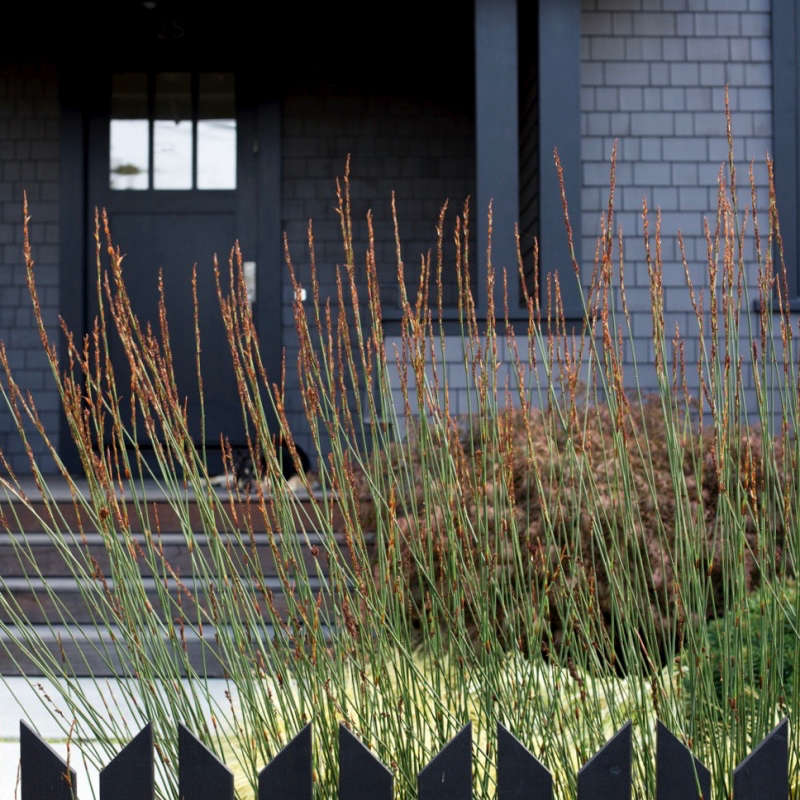

Cape rush looks like an ornamental grass and stands up to dry or windy conditions—but is evergreen, offering year-round appeal instead of sad brown clumps in winter.
Cape rush is not technically a grass; it’s a tufted perennial that grows in clumps with long, reedy leaf sheaths.
Although Chondropetalum looks like an airy grass with its foliage waving in a breeze, it’s actually an evergreen plant that hails from the Cape region in South Africa. (Historically, its leaves also have been used to thatch roofs and in brooms.)
In a landscape, cape rush creates an attractive perimeter if planted in clumps at the edge of a garden, alongside a path, or behind a fence.
Like many grasses, cape rush is tufted and sprays outward from a central clump of roots. Its hardy adaptability (you can grow it anywhere from a windswept seaside garden, to a dry landscape, to the edge of a pond). Cape rush is a happy companion to Salvia, Lavender, and other Grasses.
v5.0
When you register as a free Member of the Remodelista family of websites (Remodelista, Gardenista, and The Organized Home), you gain access to all current posts plus 10 archived posts per month, our internal bookmarking tool, and the community bulletin board.
Member benefits include:
For $5/month ($59.99 paid annually) you'll enjoy unlimited, ad-free access to Remodelista, Gardenista, and The Organized Home and all the benefits of Membership.
Subscriber benefits include:
For $5/month ($59.99 paid annually) you'll enjoy unlimited, ad-free access to Remodelista, Gardenista, and The Organized Home and all the benefits of Membership.
Subscriber benefits include:
Benefits include:
For $5/month ($59.99 paid annually) you'll enjoy unlimited, ad-free access to Remodelista, Gardenista, and The Organized Home and all the benefits of Membership.
Subscriber benefits include:
When you register as a free Member of the Remodelista family of websites (Remodelista, Gardenista, and The Organized Home), you gain access to all current posts plus 10 archived posts per month, our internal bookmarking tool, and the community bulletin board.
Member benefits include:
If at any time you want to become a Subscriber and enjoy unlimited, ad-free access to all our content, just go to the My Account link and choose Subscribe.
Advertising funds our work at Gardenista and helps us provide you with a daily dose of garden inspiration & design. We hope you’ll consider disabling your adblocker for Gardenista so we can continue our mission: a well-designed garden for all.
Thank you for your support.